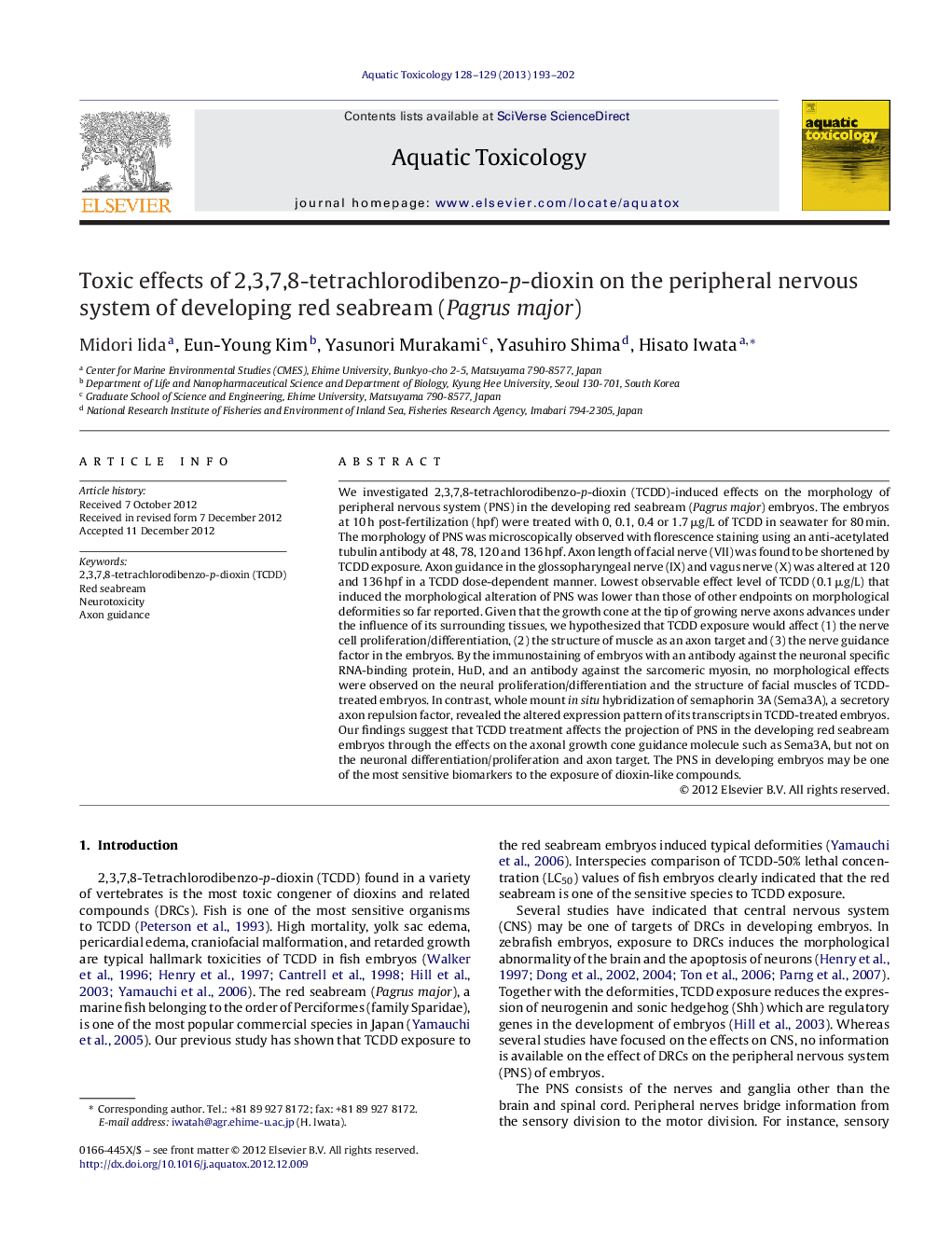| Article ID | Journal | Published Year | Pages | File Type |
|---|---|---|---|---|
| 4529543 | Aquatic Toxicology | 2013 | 10 Pages |
We investigated 2,3,7,8-tetrachlorodibenzo-p-dioxin (TCDD)-induced effects on the morphology of peripheral nervous system (PNS) in the developing red seabream (Pagrus major) embryos. The embryos at 10 h post-fertilization (hpf) were treated with 0, 0.1, 0.4 or 1.7 μg/L of TCDD in seawater for 80 min. The morphology of PNS was microscopically observed with florescence staining using an anti-acetylated tubulin antibody at 48, 78, 120 and 136 hpf. Axon length of facial nerve (VII) was found to be shortened by TCDD exposure. Axon guidance in the glossopharyngeal nerve (IX) and vagus nerve (X) was altered at 120 and 136 hpf in a TCDD dose-dependent manner. Lowest observable effect level of TCDD (0.1 μg/L) that induced the morphological alteration of PNS was lower than those of other endpoints on morphological deformities so far reported. Given that the growth cone at the tip of growing nerve axons advances under the influence of its surrounding tissues, we hypothesized that TCDD exposure would affect (1) the nerve cell proliferation/differentiation, (2) the structure of muscle as an axon target and (3) the nerve guidance factor in the embryos. By the immunostaining of embryos with an antibody against the neuronal specific RNA-binding protein, HuD, and an antibody against the sarcomeric myosin, no morphological effects were observed on the neural proliferation/differentiation and the structure of facial muscles of TCDD-treated embryos. In contrast, whole mount in situ hybridization of semaphorin 3A (Sema3A), a secretory axon repulsion factor, revealed the altered expression pattern of its transcripts in TCDD-treated embryos. Our findings suggest that TCDD treatment affects the projection of PNS in the developing red seabream embryos through the effects on the axonal growth cone guidance molecule such as Sema3A, but not on the neuronal differentiation/proliferation and axon target. The PNS in developing embryos may be one of the most sensitive biomarkers to the exposure of dioxin-like compounds.
